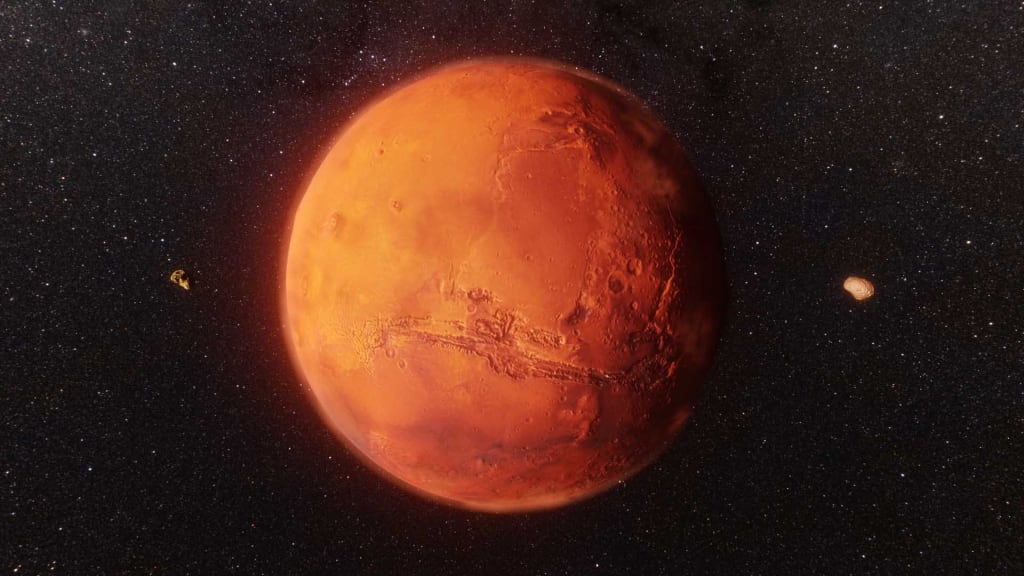
The fourth planet from the Sun, Mars, has long captured people's attention. Mars is one of the most alluring planets in the universe for study and settlement because of its rusty-red terrain, enigmatic surface features, and the presence of life. The idea of visiting Mars is now closer than ever thanks to developments in space exploration technology and a resurgence of interest from both commercial and governmental space agencies.
Mars may appear to be a barren and uninhabitable planet at first. Its thin atmosphere, which is mostly made up of carbon dioxide, provides little shielding from the intense radiation of space, and the temperature at the surface can drop to extremely low levels. However, beneath this intimidating veneer is a planet full of uncharted territory and scientific intrigue potential.
Finding evidence of past or current life on Mars and learning about its geological past are two of the main goals of exploration. It appears that Mars was once a far warmer and wetter planet with flowing rivers, lakes, and perhaps seas based on data from robotic rovers and orbiting spacecraft. Could these ancient waters have become home to microbiological life? A large portion of the scientific investigation into Mars exploration is motivated by this intriguing subject, which has scientists searching the planet's surface in search of answers.
A series of robotic expeditions over the past few decades have provided us with hitherto unheard-of insights into the Martian surface. Vast distances have been covered by rovers like Spirit, Opportunity, and Curiosity, which have examined rocks and soil, taken amazing pictures, and sent back important data to Earth. These robotic pioneers have cleared the path for later human exploration while also deepening our understanding of the climate and geology of Mars.
Indeed, space enthusiasts all across the world are fascinated by the idea of sending humans to Mars. The next ten years to the middle of the twenty-first century are the timeframes that organizations such as NASA, SpaceX, and international space agencies have set forth for their ambitious ambitions for crewed missions to the Red Planet. These missions would push the frontier of what is feasible and inspire future generations, marking a significant advancement in human space travel.
The trip to Mars is not without its difficulties, though. The necessity to build self-sustaining settlements on the Martian surface, the lengthy interplanetary journey, and cosmic radiation exposure are all significant challenges that must be solved. In addition, extensive preparation and international collaboration are required because to the high expense and inherent risks connected with crewed spaceflight.
Despite these difficulties, Mars continues to captivate people. The goal of setting foot on the Red Planet gets closer every day as we strive to push the limits of technical advancement and space travel. Whether it be engineers creating the spacecraft of the future, scientists deciphering the mysteries of Mars' past, or explorers getting ready for a once-in-a-lifetime expedition, Humanity's next great frontier is the mission to explore and colonize Mars, which is calling us to new frontiers and space travel.
Mars differs from Earth and other celestial worlds with its own set of measurements and traits. Key measurements and characteristics of Mars are as follows:
Diameter: The diameter of Mars is about half that of Earth, measuring 6,779 kilometers (4,212 miles).
Surface Area: About 28% of Earth's entire surface area, or 144.8 million square kilometers (55.9 million square miles), is made up of Mars.
Mass: Mars is far less massive than Earth, weighing only 6.39 x 10^23 kg (0.107 Earth masses).
Gravity: In comparison to Earth, Mars has less gravity. Things weigh around 38% less on Mars than they would on Earth because the planet's surface gravity is about 0.38 times greater than Earth's.
Mars has a thin atmosphere that is mostly made up of carbon dioxide (95.3%), with smaller amounts of argon, nitrogen, and other gases. The air pressure on the surface of Mars is around 0.6% that of Earth.
Temperature: Surface temperatures on Mars vary greatly, with an average of -63°C (-81°F). Location and time of day can have a significant impact on temperature variations; at the equator, daytime highs are often around 20°C (68°F), while nocturnal lows are as low as -73°C (-100°F).
Orbital Period and Distance: On average, Mars travels 227.9 million kilometers (141.6 million miles) around the Sun. It takes it roughly 687 Earth days to complete one orbit around the Sun, which is known as its orbital period.
Rotation Period: The day on Mars' axis is somewhat longer than the day on Earth. A sol, or day on Mars, lasts roughly twenty-four hours, forty-nine minutes, and thirty-two seconds.
Moons: Phobos and Deimos, the two small moons of Mars, are asymmetrical in shape and most likely formed from asteroids that were captured. With a diameter of roughly 22.2 kilometers (13.8 miles), Phobos is the largest of the two moons, while Deimos is smaller, measuring approximately 12.4 kilometers (7.7 miles).






Comments (1)
Nice write up